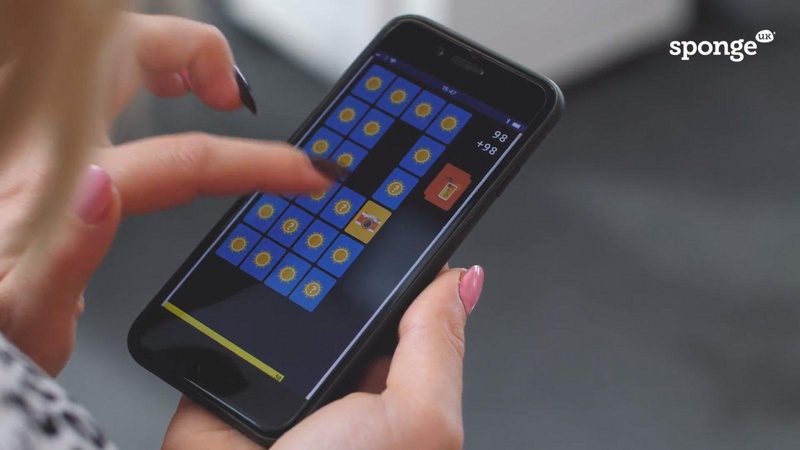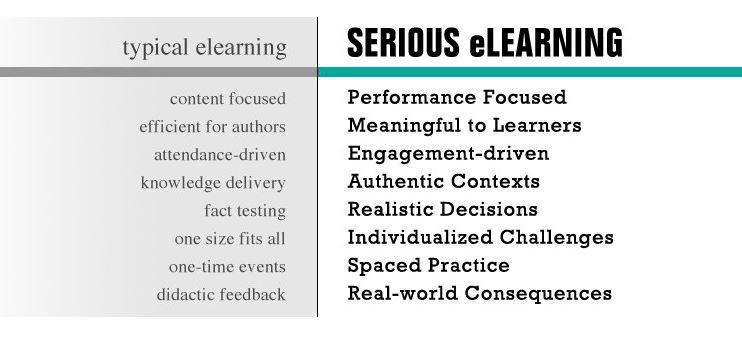What’s good in games?

Games are gaining ground within corporate training but what can they bring to the table from an instructional point of view?
Using the Serious Elearning Manifesto as a guide, this blog will explore how elearning games can help deliver the elements of a valuable learning experience.
It is General Election time in the UK and the political parties are busy trying to sell their manifestos to voters. But back in March 2013, a very different kind of manifesto was launched to the L&D community. The Serious Elearning Manifesto was aimed at generating a commitment to a new set of standards which would drive elearning forward and help it live up to its promise and potential. The manifesto outlines a set of characteristics which act as a kind of checklist for what makes good elearning.

How do elearning games measure up to the values of Serious Elearning?
The answer is potentially rather well. Elearning games have the capacity to deliver on many (if not all) of the Serious Elearning characteristics and this blog seeks to demonstrate the alignment.
- Performance Focused
Professor Karl M. Kapp of Bloomsburg University points out that if typical elearning is content focused then elearning games are action focused. Put another way, games are all about doing. It is this focus on the activity of the learner that allows games to naturally feel far more performance orientated than conventional elearning.
- Meaningful to learners
This statement is contrasted in the Serious Elearning Manifesto with ‘efficient for authors’. The inference is that typical elearning is less about what makes sense for learners and more about what works for the people who make it. But when it comes down to meaning, relevance and context are essential, and elearning games, done well, can deliver on both. Gamification Designer and Researcher, Sebastian Deterding, argues that the key is offering people the chance to pursue a personal goal within a motivational and relatable narrative.
- Engagement-driven
Games are often mistakenly viewed as more engaging than conventional elearning because they are fun, but this is missing their true value. A person’s engagement in a well-designed learning game comes not through entertainment (although that might be a by-product of the experience) but through other things including challenge, problem-solving, exploration and mastery – to name a few. Dr Ian Bogost believes it is this depth that drives engagement in games rather than fun.
- Authentic Contexts
Games can be really effective when they deal with real risks and real consequences in areas where the stakes are high such as health, wealth or work. For example, medical professionals have to deal with life and death situations so a relevant game might be around injecting medicines. It’s a real world scenario but in the game health workers can practice and explore safely.
- Realistic Decisions
Decision-making and problem-solving are important elements of well-designed elearning games and, as mentioned, the more realistic and relevant the context, the better. Brain science also supports the idea that game play helps with decision-making because games can enable people to develop probabilistic inference which aids our ability to make quick decisions.
- Individualised Challenges
The Serious Elearning Manifesto advocates individualised challenges rather than a one size fits all approach and this is particularly good advice when it comes to creating effective elearning games. To maintain an authentic context in a real word scenario, games really do need to be customised. When it comes to challenge, games are naturally constructed as just that. The learner is a player who must master an action within allotted time frame.
- Spaced Practice
One of the advantages of elearning games as opposed to ‘traditional’ elearning instruction is their ‘replayability’. Once an elearning module is completed that is usually the end of the learning experience but game play offers something different. Professor Kapp maintains that games allow a person to fail with minimal consequences which in turn encourages ‘exploration, curiosity and discovery.’ These are all particularly valuable skills in the modern workplace.
- Real World Consequences
Didactic feedback is the opposite to real world consequences according to the Serious Elearning Manifesto but having already explored how well-designed games deal with real life ramifications it seems best to concentrate on feedback in this section. Feedback in games is different to what we have come to know as the ‘traditional’ approach in elearning because it is continual throughout the process and allows consequences to be explored rather than dealing with purely right or wrong answers. Tom Kuhlmann has some very useful tips on effective feedback with its in games or ‘regular’ elearning modules.
The Serious Elearning Manifesto offers sound principles for any type of elearning instruction but it does seem as though games are ‘hard-wired’ to deliver some of them more readily than typical elearning. Crucially, the natural strength of games to deliver on an instructional level can only be realised if games are well-designed and used judiciously.
Request an elearning game demo.